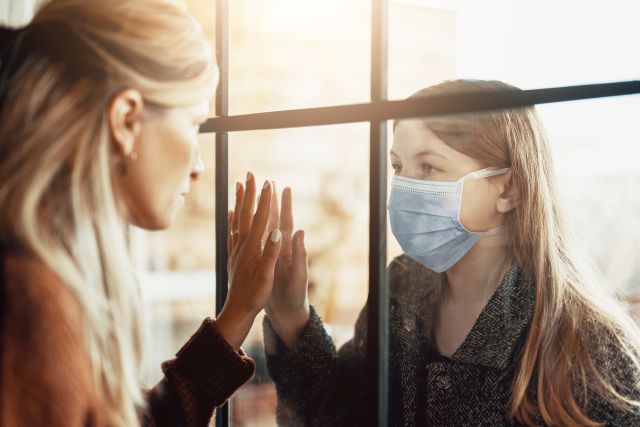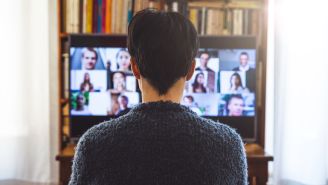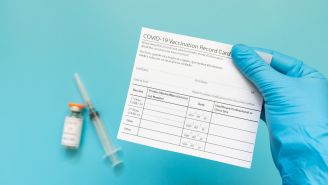Updated on July 16, 2020.
Updated on July 16, 2020 at 2:00pm EST.
Since the World Health Organization officially declared the coronavirus a global pandemic in March 2020, Americans have been bombarded with a flurry of cancellations and closings, following bans on large gatherings.
Since then, U.S. health officials have stressed that if pleas to practice social distancing and avoid social gathering of more than 10 people are ignored, the country and healthcare system will continue to be bombarded with new cases of COVID-19, which could overwhelm hospitals already facing shortages of essential medical supplies.
But what does “social distancing” mean, exactly?
Social distancing defined
COVID-19 is a highly contagious viral respiratory infection. SARS-CoV-2, the coronavirus that causes COVID-19, spreads mainly through contaminated respiratory droplets that are emitted when infected people cough or sneeze and possibly when they breathe or speak. When these droplets escape the body they may land in a nearby person’s mouth, nose or eyes. They can travel about six feet before settling on a nearby surface. If you touch a contaminated surface then touch your mouth, nose or eyes, you can also become infected.
It is not yet clear how long SARS-CoV-2 survives on surfaces, but the WHO notes that early evidence suggests it may persist for up to several days, depending on the type of surface and other variables, like temperature and humidity.
Airborne spread, however, involves aerosols—particles even smaller than respiratory droplets that may waft and linger in the air.
Aside from medical procedures that are known to emit aerosols, such as intubations, airborne transmission of SARS-CoV-2 is still under investigation. On July 9, 2020, the World Health Organization updated its guidelines, noting it could be possible in some other indoor settings.
“Outside of medical facilities, some outbreak reports related to indoor crowded spaces have suggested the possibility of aerosol transmission, combined with droplet transmission, for example, during choir practice, in restaurants or in fitness classes,” the revised guidelines state. “In these events, short-range aerosol transmission, particularly in specific indoor locations, such as crowded and inadequately ventilated spaces over a prolonged period of time with infected persons cannot be ruled out.”
More research is needed to determine how much airborne transmission may be contributing to the spread of COVID-19. What is clear, however, is that one of the key steps that people can take to help curb the spread of COVID-19 is to practice social distancing, or “remaining out of congregate settings, avoiding mass gatherings, and maintaining distance (approximately 6 feet) from others when possible,” according to the Centers for Disease Control and Prevention (CDC).
These steps should be taken along with other preventive measures, including frequent hand washing, not touching your face with unwashed hands, staying home when sick, avoiding exposure to people who may be sick and covering coughs and sneezes.
Why distancing is so important
Social distancing is not only intended to reduce the total number of people who become infected with COVID-19 but to also help slow its spread, which could ultimately save lives.
Marc Lipsitch, an infectious disease epidemiologist and microbiologist at Harvard University, tweeted it’s “plausible” that 20 to 60 percent of adults will be infected with COVID-19.
So far, most people who are infected with COVID-19 get better on their own. Only about 16 percent of COVID-19 cases result in severe illness and complications, including pneumonia and trouble breathing. Fewer still, about 5 percent, will develop very serious issues, including respiratory failure, septic shock and organ failure.
But the tally of confirmed cases continues to climb, and the number of severe or fatal cases already includes thousands of people.
If hospitals and urgent care centers in the U.S. and other parts of the world become burdened with a high volume of patients, the care given to those with severe disease or complications may be compromised. There may be a shortage of essential medical supplies, ventilators and other life-saving equipment.
In Italy, for example, a shortage of supplies and hospital beds is forcing healthcare providers to choose which coronavirus patients to save.
In short, social distancing can help slow the spread of the infection so that public officials and healthcare workers have time to respond effectively to the developing situation.
What you can do
There are things you can do each day to help protect yourself and your community.
Many businesses have banned non-essential travel. If you are debating whether or not to take a personal vacation or trip to visit friends or family, you need to weigh the risks and benefits of your decision. Flying on a plane with other passengers or being in crowded or closed settings increases your risk for infection, particularly if the ventilation is poor.
Remember: It’s not just about you. It’s also about spreading the infection to others, including those who may be at higher risk for complications.
Other ways to practice social distancing include working from home and immediately isolating yourself and calling your healthcare provider (HCP) right away if you develop symptoms, such as a dry cough, fever and fatigue, or if you suspect that you’re infected.
Before going to a doctor’s office or emergency room, always call ahead and inform the medical staff that you’re having symptoms that you think may be due to COVID-19. Your HCP will work with your local public health department and the CDC to determine if you need to be tested for the coronavirus.






